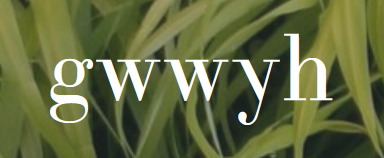It's The Berries
Last September, I had a chance to visit Margaret Roach's Hudson Valley garden on a Garden Conservancy Open Day. Her garden is impressive - packed with a bunch of delectable edible and ornamental plants I've added to my 'must have' list. But it was the berries that truly won my heart. The leaves of Cornus, Crabapple, Aronia, Amalanchier, Winterberry and Viburnum were just starting to turn color and heavily jeweled with plump red, black and purple berries. If there was ever anything you'd want in a fall garden, it was here.
It hadn't occurred to me to include them in my garden until I was wowed by this sight. Sure, I had a few hollies here and there that sported clusters of red berries, but it looked paltry by comparison. I suppose one of the reasons was lack of space, my garden is too small for most of the trees and shrubs I fell in love with in Margaret's garden, so lately, I've been checking out small berrying shrubs that might be suitable.
For a long time I rejected Beautyberry (Callicarpa americana, zones 5-8), because it leafs out late and looks dead until the end of June. I changed my mind about it in September when I saw several handsome masses nestled into a hillside in the State Botanical Garden in Athens,Georgia. I forgot how pretty they are once they start doing their thing.
Those bright little purple clusters are irresistible, and so what if it looks like a bunch of sticks until June? I might be able to live with that. It berries from September until the end of November when the birds finish them off. It will set fruit in partial shade, but is more opulent in the sun. As fall progresses, the leaves turn striking yellow. Its size (4-8 feet) qualifies it for a spot in a small garden like mine.
Here it is up north in the back borders of the Warner Castle in Rochester, NY. Callicarpa 'Early Amethyst' is rocking it with a container of Iresine and Ipomoea 'Blackie' (Sweet Potato Vine) that picks up on the purple theme.
My friend and horticulturist Nellie Gardner at the Darwin Martin House in Buffalo turned me on to Coralberry (Symphoricarpos oriculatas, zones 3-7). She planted a hedge of it in full sun on a property we maintain. It's a striking shrub of medium height, about 4-6 feet tall. You can see that the foliage looks a little beat (a victim of this summers drought), but the berries were not deterred - they began pumping them out in late September.
The bubble gum pink berries hang on into late November. I like using them in fall flower arrangements and of course, the birds flock to them.
St. John's Wort (Hypericum) has sulphurous yellow flowers that bloom in late June. The flowers don't wow me much, but the tiny delicate berries that pop out on this on Hypericum 'Albury Purple', (zones 4-8) at the end of summer delight me. It doesn't take up much space either (1.5-3' height and width).
I"m fond of Viburnums, but most of them get too big for my small property. So when I saw the Viburnum hedge garden designer Jean Westcott planted along the driveway of her Rochester, NY shop, The Artful Gardener, I knew I wanted these. Her hedge contains two varieties - both hardy from zones 5-9; Viburnum nudum 'Winterthur' and Viburnum 'Brandywine.' Both are slow growing and their mature height is around six feet. In order to get berries on 'Winterthur' you must plant several of them together. 'Brandywine' will fruit by itself. Jean comments, 'Winterthur' has the better form and heavier leaf set. 'Brandywine' is a bit rangier in habit but has a very strong fruit set. A mix of both in a mass planting works well, but if you are creating a hedge, 'Winterthur' is the better option."
These bright blue berries against the glossy dark red leaves made my heart sing. I'd love a few or an entire hedge of them.
An October trip to Vermont gave me a chance to visit Gordon and Mary Hayward's enormous pastoral property. They garden on a much grander scale than I do, and I can only dream about some of the stunning trees and shrubs they grow. But as we walked around, Gordon pointed out an 'Aralia spinosa' (commonly known as Spikenard, zones 4-9) growing in the corner of one of the beds. It just might be the perfect tree for if you want berries and have limited space like I do. It is actuallly classified as an upright perennial that grows beween ten to fifteen feet tall. Dark purple berries and variegated foliage-what could be better?
I’m adding all of these to my 'must have' list of small berrying trees and shrubs, but for now, this is plenty of food for thought and birds - my favorite source of winter entertainment.










